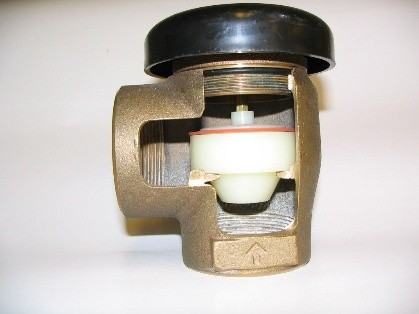The Atmospheric Vacuum Breaker (AVB) is a backflow prevention device often used in residential and commercial buildings as well as in factories. It acts as a relatively simple protection by creating an air vent when the pressure drops in the pipe. However, despite its simplicity, the use of the AVB can be misunderstood, leading to improper installation which, in turn, completely negates the function of the device.
Functions and Conditions of Use
The AVB is designed only for situations where there is a risk of siphoning, not back pressure. Therefore, it can be used for high risks, provided that the requirements set out in CSA B64.10:2023 are met. These include:
- It must be installed vertically, above the point of use,
- Its critical level must be at least 25 mm above the overflow level of the protected device or container,
- It must not be installed on pipes under continuous pressure (more than 12 consecutive hours),
- It must be visible, accessible, and ventilated at all times.
Common mistakes that impair its function
In the field, we still see AVBs installed by default without taking into account all the constraints involved. For example, an AVB may be installed too low in relation to the tank or the hose it feeds, which makes siphoning possible.
What are the consequences of improper installation?
An improperly installed AVB provides no protection against contaminated water backflow. First, this represents a non-compliance with CSA B64.10:2023. Subsequently, various penalties may apply to the building owner if contamination results.
Best practices to remember
- Ensure that the AVB is suitable for the type of supply (no back pressure possible),
- Maintain a minimum height of 25 mm between the critical level and the overflow,
- Avoid any installation under continuous pressure or in unventilated space,
- Choose a visible, accessible, and frost-free installation location.
Article written by: Alae Bahlouri
